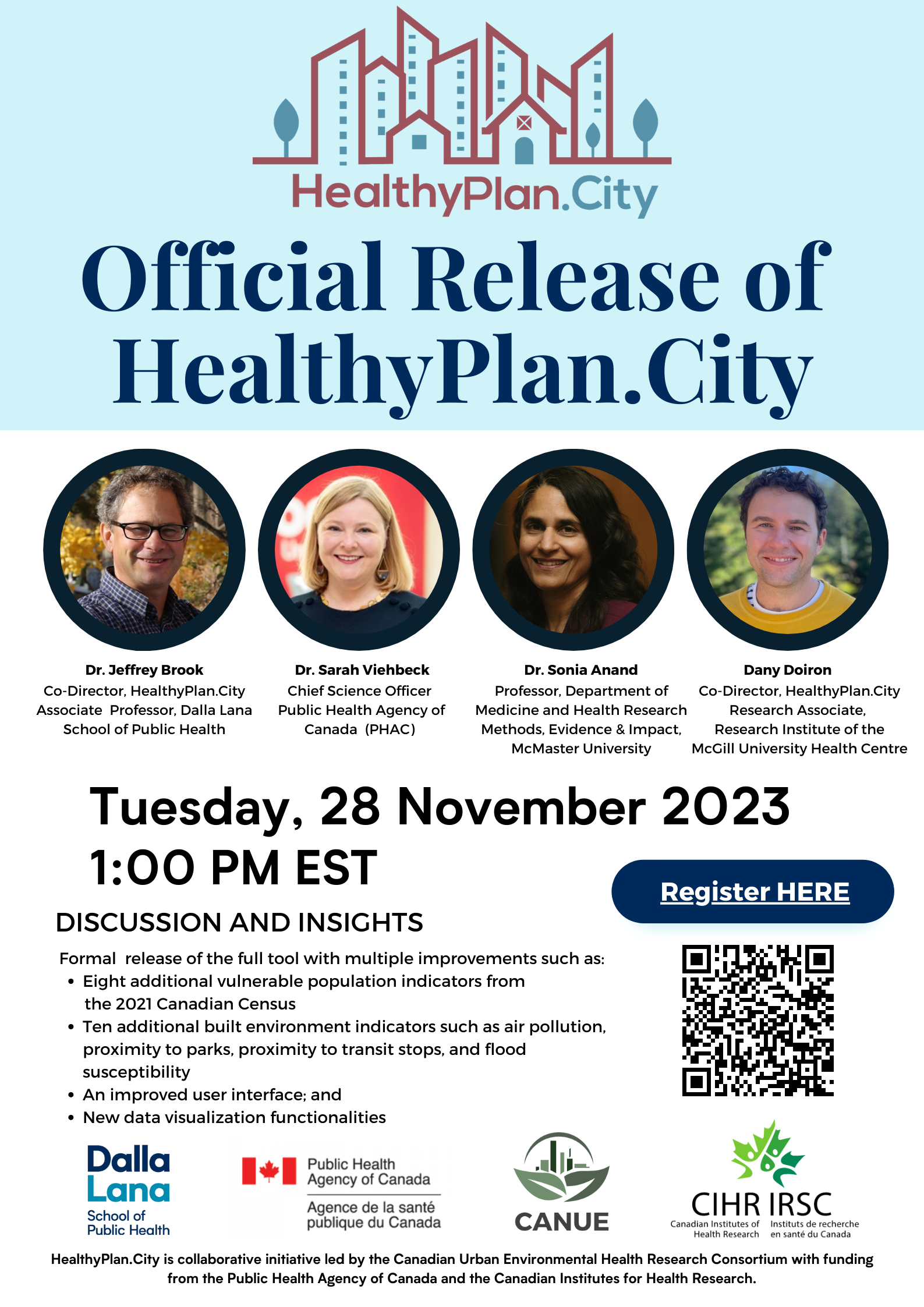- Location
- Webinars will be held via Zoom, details will be sent to all registered participants via Eventbrite.
- Series/Type
- DLSPH Event
- Format
- Online
- Dates
- November 28, 2023 from 1:00pm to 2:00pm
Links
In this webinar, HealthyPlan.City co-directors Jeff Brook and Dany Doiron will provide an overview of the data and functionalities included in the new version of the HealthyPlan.City tool. Dr. Sarah Viehbeck, Chief Science Officer of the Public Health Agency of Canada (PHAC) will give opening remarks with closing remarks from Dr. Sonia Anand, Professor of Medicine & Epidemiology at McMaster University.
A preliminary version of the tool focussing on heat islands and tree canopy cover was made publicly available in summer 2022. In this first formal release of the full tool there are multiple improvements such as:
– Eight additional vulnerable population indicators from the 2021 Canadian Census
– Ten additional built environment indicators such as air pollution, proximity to parks, proximity to transit stops, and flood susceptibility
– An improved user interface; and
– New data visualization functionalities
Urban environmental conditions, such as temperature, air quality, access to green spaces, and community amenities have a significant impact on public health, but some people live in areas with fewer beneficial conditions, and face greater health risks as a result. HealthyPlan.City is a free, publicly accessible web tool that helps users identify areas within Canadian cities where relatively higher proportions of vulnerable populations experience lower than average levels of beneficial environmental conditions. Using nationally standardized environmental data from satellite imagery and other large geospatial databases and demographic data from the Canadian Census, this web mapping tool provides a block-by-block snapshot of environmental inequities in over 125 cities across Canada. HealthyPlan.City aims to support urban planners, public health professionals, policy makers and community organizers to identify neighbourhoods where targeted investments and improvements to the local environment would simultaneously help communities address environmental inequities, promote public health and adapt to climate change.
